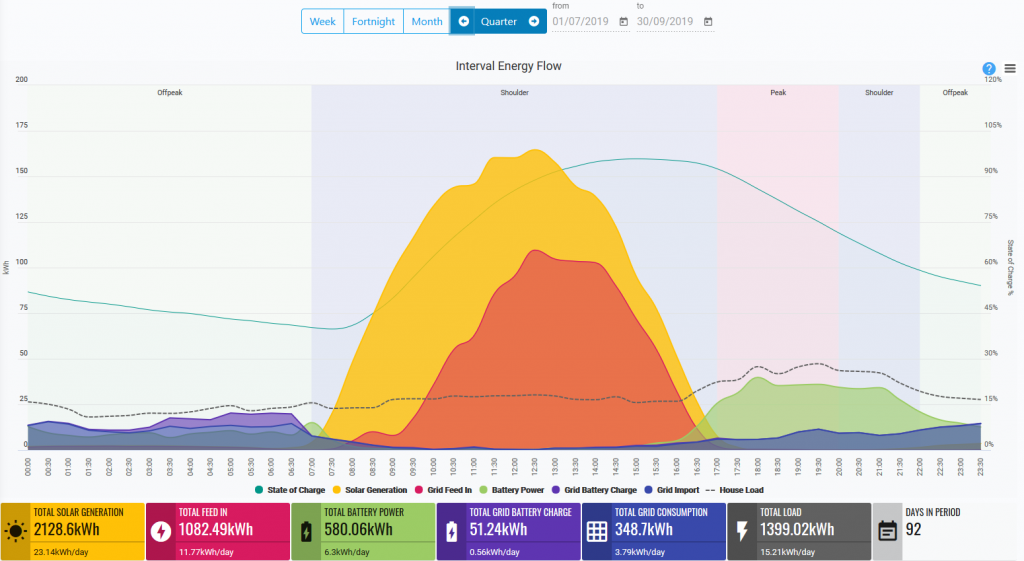Charlie’s story (not part for Solar Bulk Buy)
3 Oceanview Way, Tomakin. New solar installation November 2018.
When I decided to build a new house in 2018 I had the freedom to choose a block of land and a house plan to provide good solar orientation and I could have the installation done as part of the house build. Because I didn’t live in the area I didn’t know any local installers and I didn’t know about the SHASA bulk buy opportunity so I selected on the internet based on what I thought was quality technology and support. The house is all electric – there is no gas connection – a primary goal was to replace fossil fuel energy as much as possible.
There are 21 Suntech STP 270W panels giving 5.67kW maximum output. There is a single wall unit containing an AlphaESS 6kW inverter and two 5.7kWH AlphaESS lithium iron phosphate batteries. The panels have a 12 year warranty and the inverter and batteries have a 10 year warranty.
The system can be used for backup power when grid supply fails by flicking a switch in the meter box. I was very happy with that choice when we had no grid power for 6 days after the January 2020 bushfires. The backup power is connected to all lights and power points, so includes the fridge, microwave, washing machine, computer, TV, coffee machine, rain water tank pump and solar hot water recirculation pump. It is not connected to the large current draw items of air-conditioner, oven, hotplate or solar hot water booster.
On very smoky days after the fires there was still enough sun to re-charge the battery each day, but the hot water temperature dropped noticeably. It was never a cold shower, for a single occupant, but I did think that a family would prefer to have had a gas hot water booster, or possibly a heat pump hot water system with a lower current draw and connected to the backup supply. But, my situation was much better than not having any electric power.
The installation cost was $18,000 and in 2019 it saved me about $1,000 which implies about 18 years payback time. In my previous house where I had solar panels but no battery the payback time was 6 years so the battery makes a big difference, but it gives the convenience of the backup supply and allows me to increase my use of renewable power and export much more than I import.
Before discussing power costs, I’ll note that circumstances differ, and this is a single person residence. For the 12 months of 2019, the system generated 9467kWh, the house used 4763kWh, export was 5469kWh and import (purchased) was 766kWh. To me, the export of this much renewable power makes it a good deal, and more than offsets the amount of petrol I use in my car in a year.

The Evergen software uses my actual power rates (peak, off-peak and shoulder) and calculates that I saved $1534. However, this is based only on electricity cost and does not include supply costs, which in my case was $560.

The figures below show the difference in energy flow between summer and winter, and across the
12 months of 2019.




